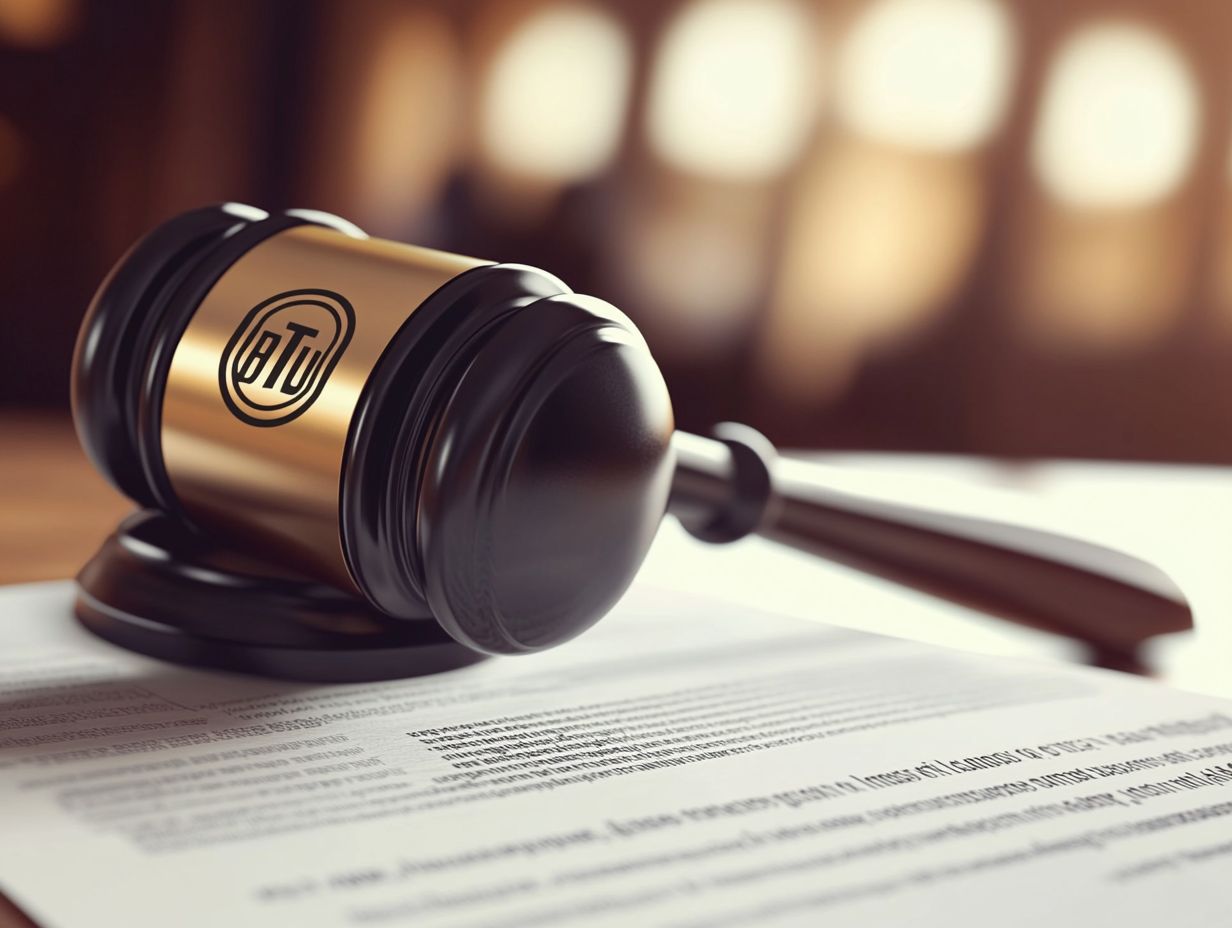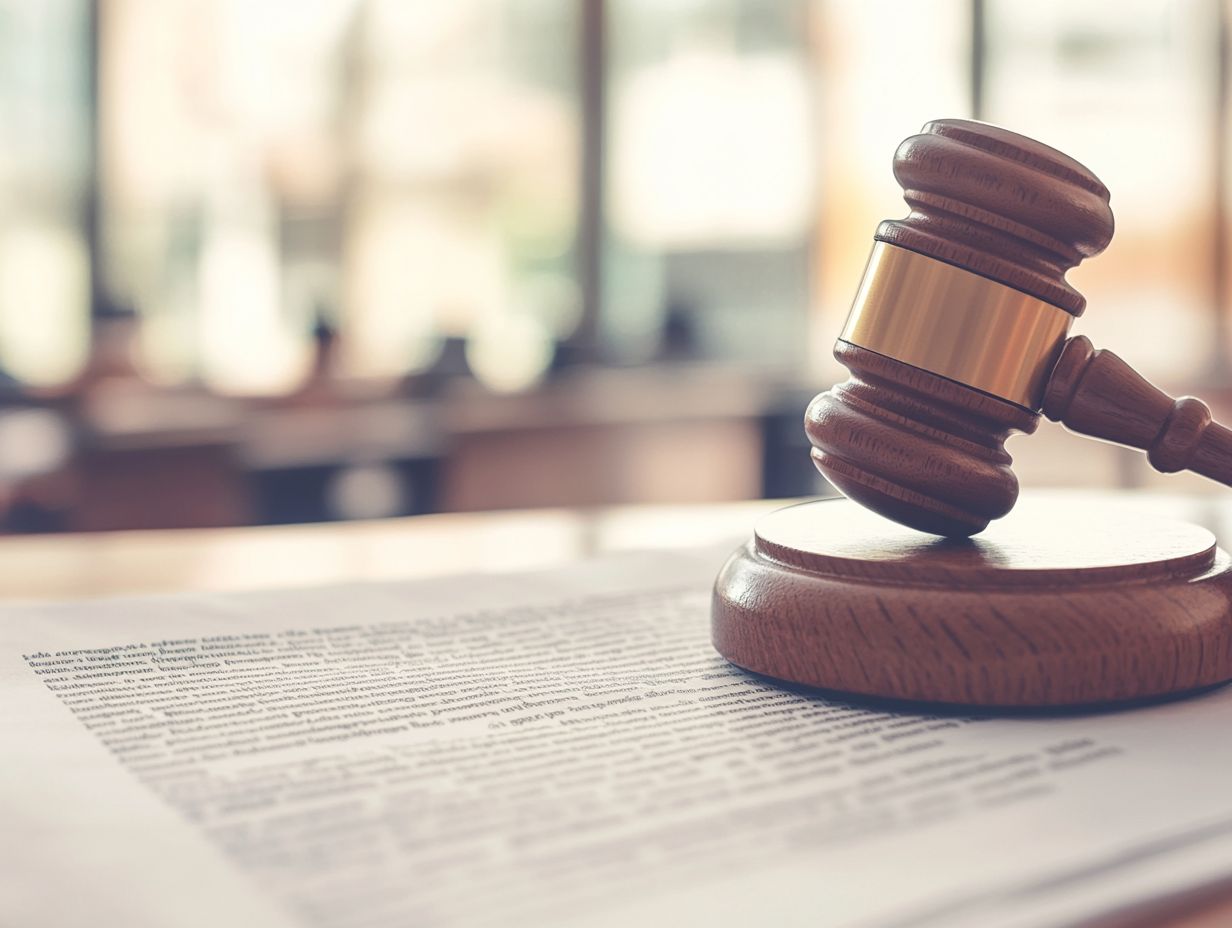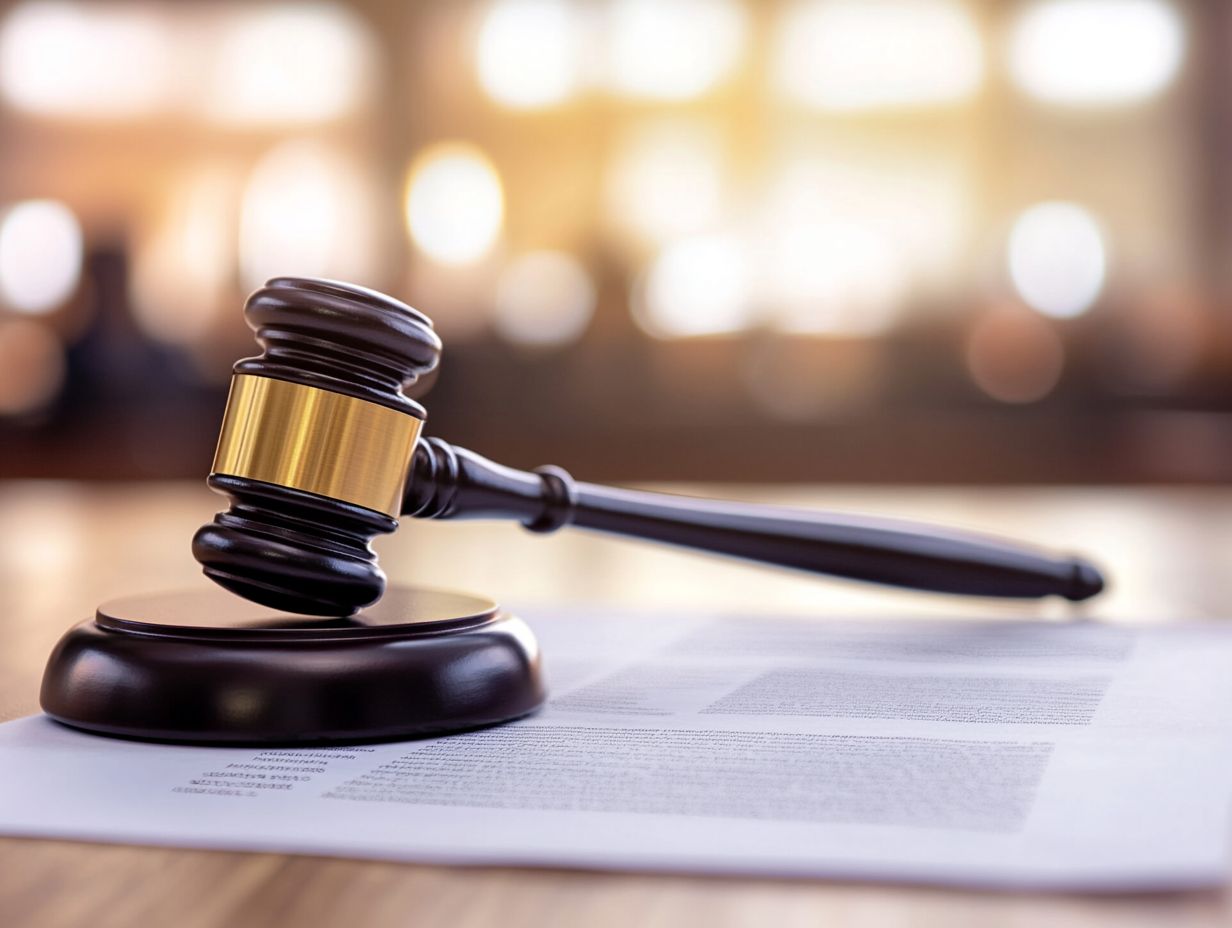10 Tips for Protecting Your Trademark Rights
Protecting your trademark rights is vital for preserving your brand’s identity and value. In today s landscape of digital marketplaces and global competition, having a solid grasp of trademark protection is indispensable.
This article presents ten practical tips designed to help you navigate the intricacies of trademark registration, proper usage, and enforcement.
From conducting thorough searches to identifying potential scams, these insights will arm you with the knowledge necessary to safeguard your intellectual property effectively. Immerse yourself in this guidance to ensure your brand stays protected and thrives.
Contents
- Key Takeaways:
- 1. Register Your Trademark
- 2. Conduct a Thorough Search
- 3. Use the Trademark Properly
- 4. Monitor for Infringement
- 5. Enforce Your Trademark Rights
- 6. Keep Your Registration Up-to-Date
- 7. Understand the Difference Between a Trademark and a Copyright
- 8. Consider International Protection
- 9. Be Aware of Common Trademark Scams
- 10. Seek Legal Assistance If Needed
Key Takeaways:

Register your trademark to establish legal ownership and protection.
Conduct a thorough search to ensure your trademark is not already in use.
Properly use your trademark to maintain its distinctiveness and protect against infringement.
1. Register Your Trademark
Registering your trademark is an essential step in establishing brand protection and securing your brand’s rights. To navigate this process effectively, consider following the 5 best practices for international trademark registration. It ensures that your brand identity remains distinct and recognizable in the marketplace.
This grants you exclusive rights to its use and prevents unauthorized exploitation by others. The trademark application process typically kicks off with a thorough search to identify any existing marks that might conflict with your intended trademark.
Once that’s established, federal registration procedures require specific documentation, including a clear representation of your mark and a description of its use in commerce.
Using trademark symbols, like for registered trademarks and for unregistered marks, enhances your legal standing. This signals to competitors and consumers alike that your mark is protected, reinforcing its value and integrity in the market.
2. Conduct a Thorough Search

A thorough trademark search is crucial to identify existing trademarks and avoid potential disputes. This ensures that your brand name or logo doesn’t infringe on anyone else’s rights under trademark law.
This process involves several steps, starting with an investigation of available resources that can illuminate existing marks. One vital tool is the Trademark Status and Document Retrieval (TSDR) database, which provides comprehensive insights into registered trademarks.
As you evaluate existing trademarks, you must consider the similarity in name or design, as well as related goods and services. Overlooking these factors could lead to costly legal battles, damage your reputation, and disrupt your market presence.
3. Use the Trademark Properly
Proper usage of your trademark is crucial for maintaining its distinctiveness. To learn more about protecting your brand, check out this guide on how to enforce your trademark rights, which helps ensure that your brand remains recognizable in a crowded marketplace.
When incorporating trademarks, adhere to specific guidelines. Always capitalize the trademarked term and use the appropriate symbols for registered trademarks and for unregistered marks.
These practices demonstrate respect for the brand and enhance its legal protections. Consistent branding ensures that consumers clearly differentiate between various brands, cultivating trust and loyalty.
Diligent trademark use can strengthen your brand assets, making it easier to enforce rights against infringement. To ensure you’re on the right track, be aware of the top 10 trademark registration mistakes to avoid and maintain a competitive edge in the market.
Ready to protect your brand? Start your trademark registration today!
4. Monitor for Infringement

Monitoring for trademark infringement is a proactive strategy essential for safeguarding your intellectual property rights. It helps you detect unauthorized use and take the necessary steps to protect your brand.
By utilizing various monitoring tools, you can significantly enhance this process. Advanced online platforms can search the internet for potential misuse. Trademark watch services provide regular updates on any new filings that might pose a risk.
Understanding compliance requirements is vital, especially given the intricacies of local and international laws. Stay informed about these jurisdictional nuances.
For effective enforcement, consider these best practices:
- Maintain detailed records of your trademark usage.
- Address violations promptly.
- Seek legal counsel when navigating complex situations.
By integrating these strategies, you can fortify your position and ensure lasting protection for your intellectual assets.
5. Enforce Your Trademark Rights
Enforcing your trademark rights is essential for preserving your brand’s integrity and preventing disputes. Implementing strategies for global trademark protection ensures that this proactive approach safeguards your exclusive rights and helps you manage your brand assets effectively.
A systematic strategy tailored to your brand’s unique demands is required. For example, sending cease-and-desist letters serves as a formal initial warning to potential infringers, compelling them to stop unauthorized use.
If this method doesn t yield results, pursuing legal action may become necessary to firmly establish your rights and deter future violations. Implementing licensing agreements can also offer an extra layer of protection.
This allows others to use your trademark under specific conditions while ensuring your interests remain safeguarded. Effective brand management helps identify potential infringements early and enhances your brand’s overall reputation and value in a competitive marketplace.
6. Keep Your Registration Up-to-Date

Stay proactive by renewing your trademark regularly! Keeping your trademark registration up-to-date is critical for preserving your trademark rights and ensuring your brand remains protected under trademark law.
Being vigilant is essential, as the realm of intellectual property can change swiftly. It’s vital to stay informed about deadlines and obligations. Regularly monitoring the status of your trademarks, along with understanding must-know trademark facts for entrepreneurs, allows you to identify potential issues before they escalate, thereby safeguarding your brand’s reputation in the market.
Understanding the renewal process enables smooth transitions. Adhering to key compliance requirements such as using your trademark in commerce and actively monitoring for infringement is vital to prevent lapses in protection.
Don t risk losing your trademark! Neglecting to renew could result in a loss of exclusivity, paving the way for competitors and undermining your brand’s value. Therefore, adopting effective trademark maintenance strategies is absolutely crucial.
7. Understand the Difference Between a Trademark and a Copyright
Understanding the distinction between a trademark and a copyright is essential as you navigate the complex landscape of intellectual property. Each type offers unique protections for various aspects of your brand assets.
Trademarks primarily protect identifiers that indicate the source of goods or services think logos and brand names. This ensures consumers can easily distinguish your offerings from competitors.
Copyrights, on the other hand, protect creative works like literature, music, and artwork, granting you exclusive rights to your expressions.
For businesses like yours, managing these forms of intellectual property effectively requires tailored strategies for enforcement and brand protection. It s crucial to identify which assets fall under trademark or copyright law so you can safeguard your interests and prevent infringement in an increasingly competitive market.
8. Consider International Protection
Protecting your trademark internationally is crucial in today s global marketplace. It helps you safeguard your brand identity while taking advantage of trademark licensing opportunities.
As you enter new markets, keeping your intellectual property secure becomes very important. The Madrid Protocol is an international agreement that makes trademark registration easier and more affordable across countries.
International treaties create a system for trademark enforcement. This boosts your brand’s value and reassures consumers and partners, helping you stay competitive.
When considering these options, pay attention to local laws. This ensures your brand fits well with your global strategy.
9. Be Aware of Common Trademark Scams
Know about trademark scams! They can put your hard work at risk.
These scams often look legitimate at first. They target businesses with false promises about enhancing or securing trademark rights.
You may receive fake renewal notices that trick you into paying extra fees. This wastes your money and distracts you from real trademark protection efforts.
To stay safe, always verify the source of any communication. Keep yourself informed about authentic trademark processes to defend against misleading threats.
10. Seek Legal Assistance If Needed
Seeking legal assistance from a qualified trademark attorney can significantly deepen your understanding of trademark law. They provide invaluable support as you navigate the intricate world of brand management and protection.
These experts bring a wealth of knowledge to the table. They help you avoid costly missteps during the trademark registration process. Not only do they guide you through filing applications, but they also ensure your brand adheres to all pertinent regulations, reducing the likelihood of infringement disputes in the future.
A trademark attorney can offer strategic counsel on enforcing your rights against potential infringements, including tips for protecting your copyrighted work. This is essential for safeguarding your brand’s integrity.
With their expert guidance, you can rapidly strengthen your market presence and focus on growing your brand without worry! Don t wait! Consult a trademark attorney today to protect your brand!
Frequently Asked Questions
What are some tips for protecting my trademark rights?
Some tips for protecting your trademark rights include:
- Registering your trademark
- Using it continuously
- Monitoring for infringement
- Enforcing your rights
These tips can help safeguard your brand and provide strong trademark choices to prevent others from using your trademark without permission.
How do I register my trademark?
To register your trademark, file an application with the United States Patent and Trademark Office (USPTO). The application process can be complex, and it is recommended to seek the assistance of a trademark attorney.
What is continuous use of a trademark?
Continuous use of a trademark means that you are actively using it in commerce. This includes using it on your products or services, advertising, and promoting it while maintaining its distinctiveness. Failure to continuously use your trademark can result in the loss of your rights.
What is trademark infringement?
Trademark infringement occurs when another party uses a trademark confusingly similar to yours without permission. This can include using a similar name, logo, or slogan in connection with similar goods or services.
What can I do if someone is infringing on my trademark rights?
If someone is infringing on your trademark rights, you can take legal action to enforce your rights. This can include sending a cease and desist letter, filing a lawsuit, or seeking damages for the infringement.
How long do trademark rights last?
Trademark rights can last indefinitely as long as you continuously use the trademark and renew it according to the USPTO’s guidelines. Registration lasts for 10 years and can be renewed every 10 years thereafter.






